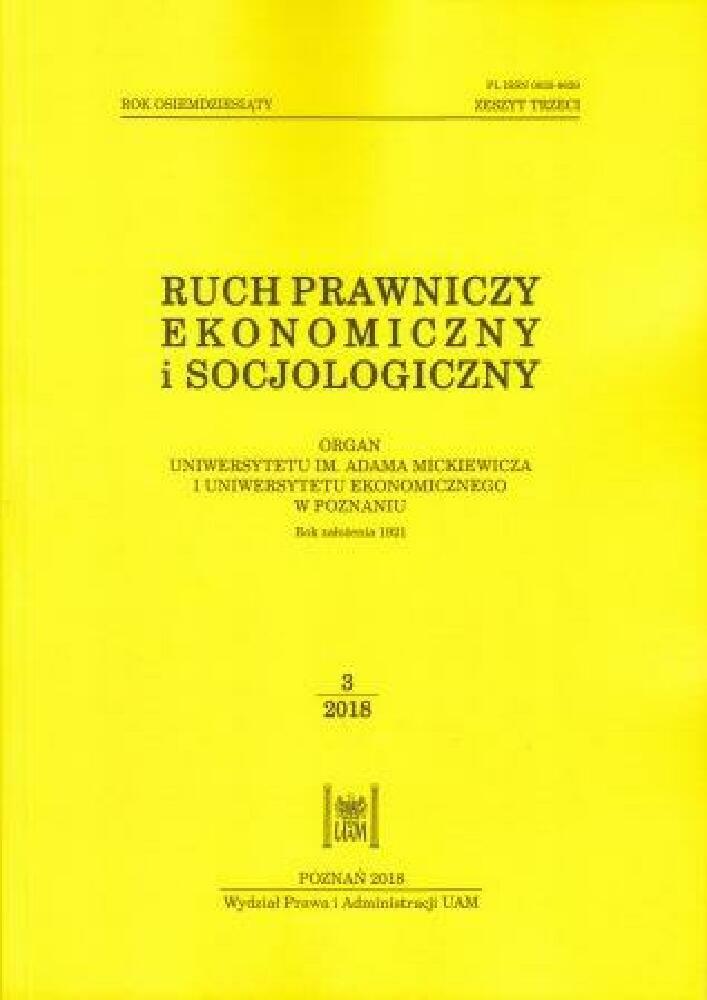Abstract
Business failure is a feature of any developed market economy. This phenomenon entails high costs, both economic and social. For this reason, attempts have been made continuously since the beginning of the twentieth century to predict failures of businesses. The interest in this issue is reflected in the application of increasingly advanced statistical methods. The aim of the paper is to compare the predictive capacity of nine methods used in the literature to predict the bankruptcy of enterprises. The empirical research was conducted on the basis of the financial data of 180 Polish public limited companies. Its results made it possible to state that the accuracy of classification of particular methods (and thus their rating) depends on the size of the research sample and on the length of the forecast period. It was also found that the rating of the tested methods does not depend on the chosen method of selection of predictive variables.References
Altman, E.I. (1968), Financial ratios, discriminant analysis and the prediction of corporate bankruptcy, The Journal of Finance 23(4): 589–609.
Aziz, M.A., Dar, H.A. (2006), Predicting corporate bankruptcy – where we stand?, Corporate Governance Journal 6(1): 18–33.
Beaver, W. (1966), Financial ratios as predictors of failure, Journal of Accounting Research 5: 71–111.
Braga-Neto, U.M., Dougherty, E.R. (2004), Is cross-validation valid for small-sample microarray classification?, Bioinformatics 20(3): 374-380
Chuang, C.L. (2013), Application of hybrid case-based reasoning for enhanced performance in bankruptcy prediction, Information Sciences 236: 174–185.
Efron, B., Tibshirani, R. (1997), Improvements on cross-validation: the .632 bootstrap method, Journal of the American Statistical Association 92(438): 548-560.
Fitzpatrick, P.J. (1932), A comparison of ratios of successful industrial enterprises with those of failed companies, Certified Public Accountant 2: 598–605.
Gąska, D. (2013), Zastosowanie metody SVM do oceny ryzyka bankructwa i prognozowania upadłości przedsiębiorstw, Śląski Przegląd Statystyczny 11(17): 289–310.
Gąska, D. (2015), Prognozowanie bankructwa za pomocą klasyfikatorów rozmytych realizujących ideę maksymalnego marginesu, Śląski Przegląd Statystyczny 13(19): 71–88.
Gepp, A., Kumar, K. (2015), Predicting Financial Distress: A Comparison of Survival Analysis and Decision Tree Techniques, Procedia Computer Science 54: 396–404.
Herman, S. (2016), Analiza porównawcza wybranych metod szacowania błędu predykcji klasyfikatora, Przegląd Statystyczny 63(4): 449-463.
Hołda, A. (2006), Zasada kontynuacji działalności i prognozowanie upadłości w polskich realiach gospodarczych, Wydawnictwo Akademii Ekonomicznej w Krakowie, Kraków.
Kim, J. (2009), Estimating classification error rate: repeated cross-validation, repeated hold-out and bootstrap, Computational Statistics & DataAnalysis 53(11): 3735-3745
Kirkos, E., (2015), Assessing methodologies for intelligent bankruptcy prediction, Artificial Intelligence Review 43(1): 83–123.
Koronacki, J., Ćwik, J. (2005), Statystyczne systemu uczące się, Wydawnictwo Naukowo-Techniczne, Warszawa.
Korol, T. (2010), Prognozowanie upadłości firm przy wykorzystaniu miękkich technik obliczeniowych, Finansowy Kwartalnik Internetowy e-Finanse 1.
Korol, T. (2010), Systemy ostrzegania przedsiębiorstw przed ryzykiem upadłości, Oficyna, Warszawa.
Krzyśko, M., Wołyński, W., Górecki, T., Skorzybut, M. (2008), Systemy uczące się: rozpoznawanie wzorców, analiza skupień i redukcja wymiarowości, Wydawnictwo Naukowo-Techniczne, Warszawa.
Martin, D. (1977), Early warning of bank failures: A logit regression approach, Journal of Banking and Finance 1: 249–276.
Merwin, C. (1942), Financing Small Corporations in Five Manufacturing Industries, 1926–1936, National Bureau of Economic Research.
Odom, M.D., Sharda, R. (1990), A neural network model for bankruptcy prediction, Proceedings of IEEE International Conference on Neural Networks: 151–173.
Pociecha, J., Pawełek, B., Baryła, M., Augustyn, S. (2014), Statystyczne metody prognozowania bankructwa w zmieniającej się koniunkturze gospodarczej, Fundacja Uniwersytetu Ekonomicznego w Krakowie, Kraków.
Ravi Kumar, P., Ravi, V. (2007), Bankruptcy prediction in banks and firms via statistical and intelligent techniques – a review, European Journal of Operational Research 180: 1–28.
Ripley, B. D. (1996), Pattern Recognition and Neural Networks, Cambridge University Press, Cambridge.
Shin, K.S., Lee, Y.J. (2002), A genetic algorithm application in bankruptcy prediction modeling, Expert Systems with Applications 23(3): 321–328.
Shin, K., Lee, T.S., Kim, H. (2005), An application of support vector machines in bankruptcy prediction model, Expert Systems with Applications 28: 127–135.
Smith, R.F., Winakor, A.H. (1930), A Test Analysis of Unsuccessful Industrial Companies, Bulletin no. 31, University of Illinois, Bureau of Business Research.
Żmijewski, M. (1984), Methodological Issues Related to the Estimation of Financial Distress Prediction Models, Journal of Accounting Research 22: 59-82.
License
Copyright (c) 2018 WPiA UAM

This work is licensed under a Creative Commons Attribution-NonCommercial-NoDerivatives 4.0 International License.





